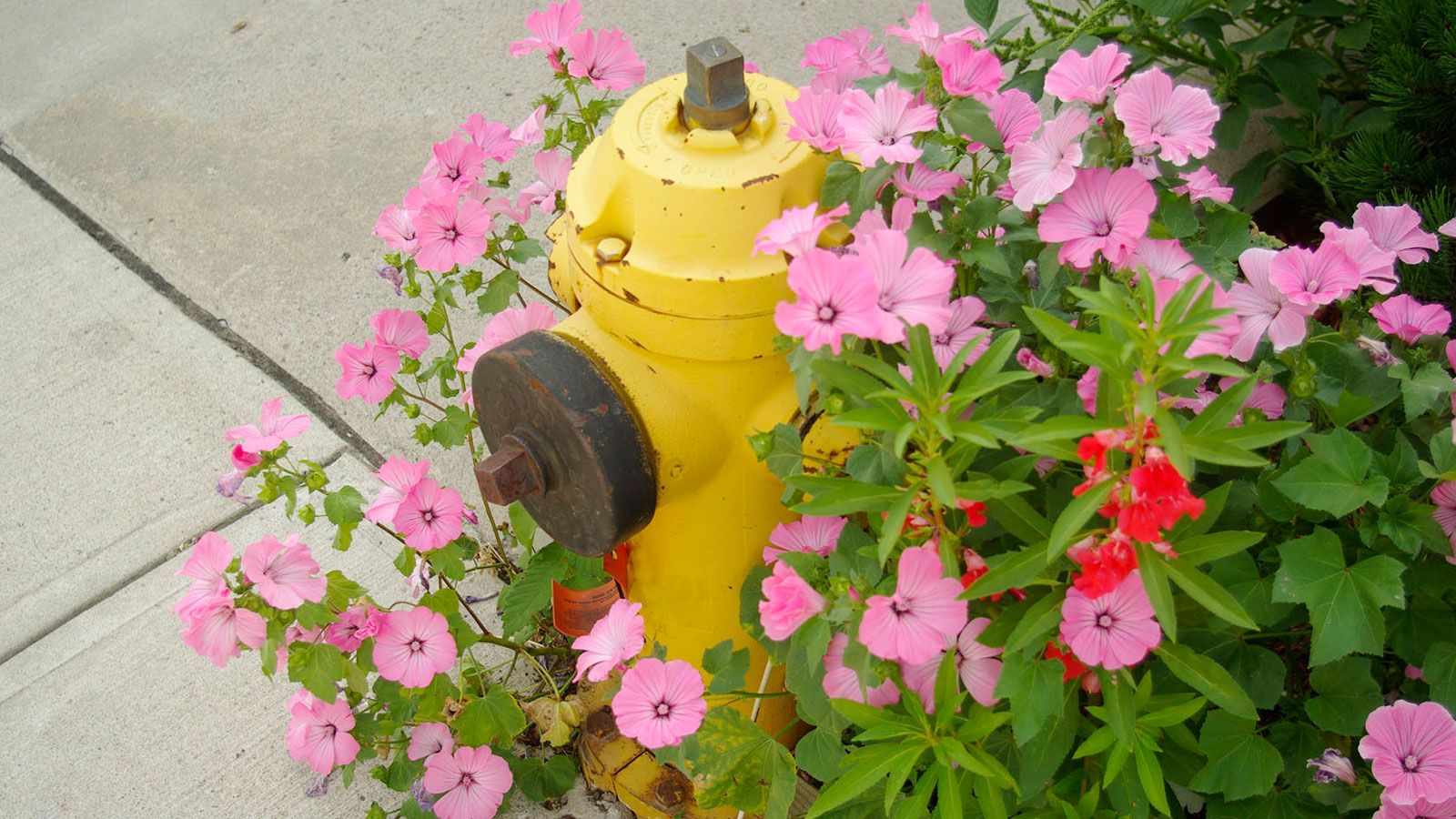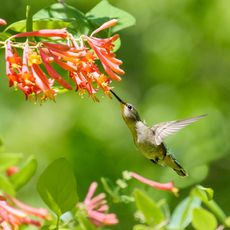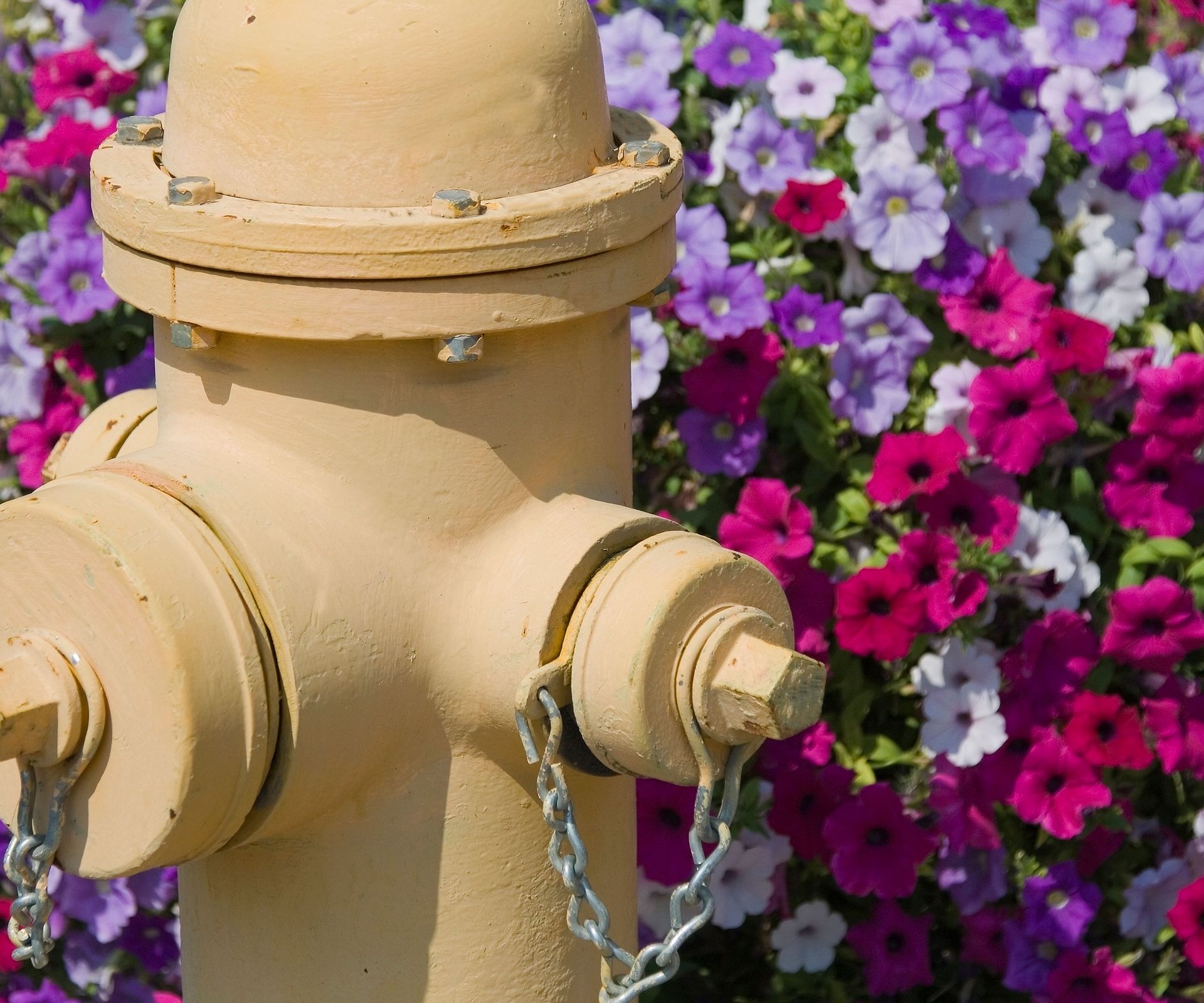Landscaping Around A Fire Hydrant: Landscaping Tips And Safety Considerations
It might not sound like the obvious choice for a landscaping project, but a fire hydrant can work with a bigger gardening vision. Follow our tips on landscaping around a fire hydrant


Landscaping around a fire hydrant poses unique challenges: what are the rules, and what can you not do when growing plants nearby? If you have a fire hydrant in your yard, it may present some interesting landscaping conundrums – but that doesn’t mean planting is a problem. Even though there may be some backyard landscaping restrictions, it’s possible to create a pleasant, well-maintained bed that fits into the rest of your garden. It just takes a little creativity and planning, as this guide reveals.
Know the Rules for Planting Around Fire Hydrants
Knowing how to landscape around a fire hydrant begins with understanding the rules. Municipalities and fire departments have rules for fire hydrants and planting. Make sure you know what your local government requires before you get started. This will help you avoid a fine and wasting a lot of time and effort.
Contact your local fire department for more information about the exact guidelines for your community. Rules regarding fire hydrant landscaping are often similar or the same across municipalities:
- Keep all taller flowering plants at least 3ft (90cm) away from hydrants. Keep in mind any low plants closer might get stepped on and crushed by a hose if the hydrant is ever pressed into service.
- There must be 15ft (4.5m) of clearance above hydrants, so trees and shrubs should be planted farther away or trimmed appropriately.
- Maintain 18in (46cm) of vertical clearance from the base of the hydrant to the middle of the large cap on the side.
- Never paint a fire hydrant.
What to Avoid When Landscaping with Hydrants
Fire fighters need to have quick and easy access to a hydrant, so keep that in mind when planning the surrounding landscaping. They need to be able to spot it quickly and get to it with their tools and hose. One of the key rules for planting around fire hydrants is making sure you avoid cramped, inaccessible areas.
Some departments might recommend plants to avoid near hydrants because of how they grow. For instance, avoid fast-growing vines that could get out of control and obscure a hydrant before you are able to maintain it. A plant with thorns is also a bad idea, as it will interfere with the firefighters accessing the hydrant. So if you are a rose lover, make sure you maintain a good distance between the hydrant and any potential thorns!
Ideas for Landscaping Around a Fire Hydrant
Depending on where the hydrant is located, you might want to create a bed around it or just grow grass. There are a few good reasons to create a bed. For instance, it will eliminate the challenges of mowing around a hydrant.
Also, a hydrant is not very aesthetically pleasing. Yes, it needs to be visible to firefighters, but you can still make it blend in a little better with a well-planned bed. Here are some ideas to get you started:
Gardening tips, videos, info and more delivered right to your inbox!
Sign up for the Gardening Know How newsletter today and receive a free download of our most popular eBook "How to Grow Delicious Tomatoes."
- Start by outlining an area for a bed that makes sense. If the hydrant is on a corner of the lot, use that as a guide for creating an interesting shape. If there is a street sign or stop sign near the hydrant, you might want to include it in the bed.
- Create a nice edge for the bed, but make sure it won’t impede firefighters. Use rubber tubing, for example, instead of rocks they could trip over.
- A simple plan for the area around a hydrant is to choose a groundcover, perhaps a steppable one. This eliminates the need for mowing grass around it while also ensuring the hydrant is still easy to access.
- If you are creating a bigger and more varied bed, choose a focal point plant to place at the other end of the bed from the hydrant. A shrub or small tree will balance it without being so close as to violate the rules.
- Select a few lower growing perennials and avoid vines. Good choices are plants that are typically used for edging beds like phlox, vervain, stonecrop, small hostas, astilbe or lamb’s ear.
- Add in some attractive perennials, like sweet alyssum, petunias, celosia, cosmos, marigolds or impatiens.
A fire hydrant is a creative challenge for a gardener. Still, landscaping around a fire hydrant can be a novel and satisfying way of integrating functionality and artistry, if you get the balance right. Follow the rules, then let your imagination take over and use the hydrant as a starting point for a beautiful new bed.

Mary Ellen Ellis has been gardening for over 20 years. With degrees in Chemistry and Biology, Mary Ellen's specialties are flowers, native plants, and herbs.
-
 7 Lush Leafy Plants Slugs And Snails Won’t Touch – For A Gorgeous Pest-Proof Garden
7 Lush Leafy Plants Slugs And Snails Won’t Touch – For A Gorgeous Pest-Proof GardenTired of slugs and snails devouring your prized plants? Discover the verdant varieties that these pests avoid, and keep your garden vibrant and damage-free.
By Bonnie L. Grant
-
 7 Cactus Dahlia Varieties And Semi-Cactus Dahlia Types To Try
7 Cactus Dahlia Varieties And Semi-Cactus Dahlia Types To TryWhile some dahlias have soft petals or pompon heads, others have dramatic spikes! We round up seven outstanding cactus dahlia varieties and semi-cactus types to grow
By Mary Ellen Ellis
-
5 Water Butt And Rain Barrel Benefits: Why It Matters For Sustainable Gardening
For anyone serious about sustainable gardening, rainwater harvesting is an easy way to conserve natural resources. Here are five water butt and rain barrel benefits
By Mary Ellen Ellis
-
All About Fertilizer: Everything You Need To Know About Feeding Plants
Identifying the best plant food and feeding times are critical to plant health. Our guide to fertilizer explains how and when to feed crops and ornamentals for happier plants
By Bonnie L. Grant
-
Essential Cottage Garden Ideas: 5 Ways To Dive Into The Cottage Garden Trend
If you’re after easy cottage garden ideas for old fashioned beauty in any garden, read on! These five thematic selections will help fill your plot with old world charm and elegance
By Susan Albert
-
 Attract More Monarchs: 8 Best Flowers For Monarch Butterflies
Attract More Monarchs: 8 Best Flowers For Monarch ButterfliesCreating a floral haven for pollinators is one of life’s joys – and monarchs are some of the most precious. Here are the best flowers for monarch butterflies
By Tonya Barnett
-
 9 Bird-Friendly Flowering Plants: Flowers That Attract Birds Through The Seasons
9 Bird-Friendly Flowering Plants: Flowers That Attract Birds Through The SeasonsChoose the right flowering plants and your garden will become a favorite hangout for avian visitors. Try these nine flowers that attract birds to your yard
By Tonya Barnett
-
 Support California Dogface Butterfly: Do More For Zerene Eurydice
Support California Dogface Butterfly: Do More For Zerene EurydiceWould you like to know how to support California’s state insect? We explain the vital pollinating role of the California dogface butterfly and how to help it in your backyard
By Teo Spengler
-
 Try These Hummingbird Vines: 8 Best Flowering Vines For Hummingbirds
Try These Hummingbird Vines: 8 Best Flowering Vines For HummingbirdsWant to improve your chances of attracting some of the world’s most charming avian visitors? Here are the best eight flowering vines for hummingbirds
By Tonya Barnett
-
 Beautiful Butterfly Garden Ideas: 10 Ways To Attract Pretty Pollinators To Your Yard
Beautiful Butterfly Garden Ideas: 10 Ways To Attract Pretty Pollinators To Your YardBringing butterflies to your backyard is one of the most important ways you can enhance wildlife, boost pollination and improve biodiversity. These 10 butterfly garden ideas can get you started
By Mary Ellen Ellis





